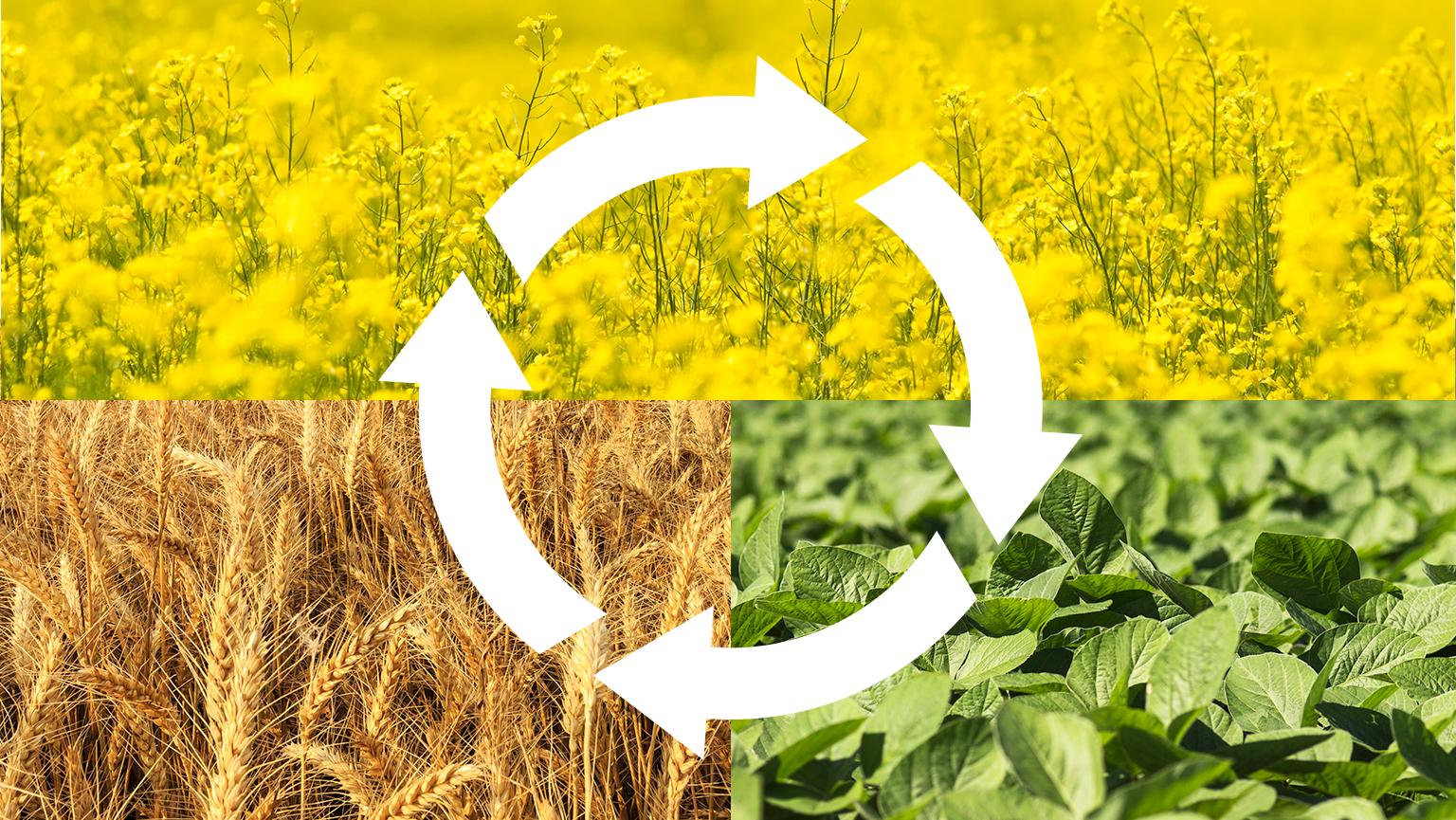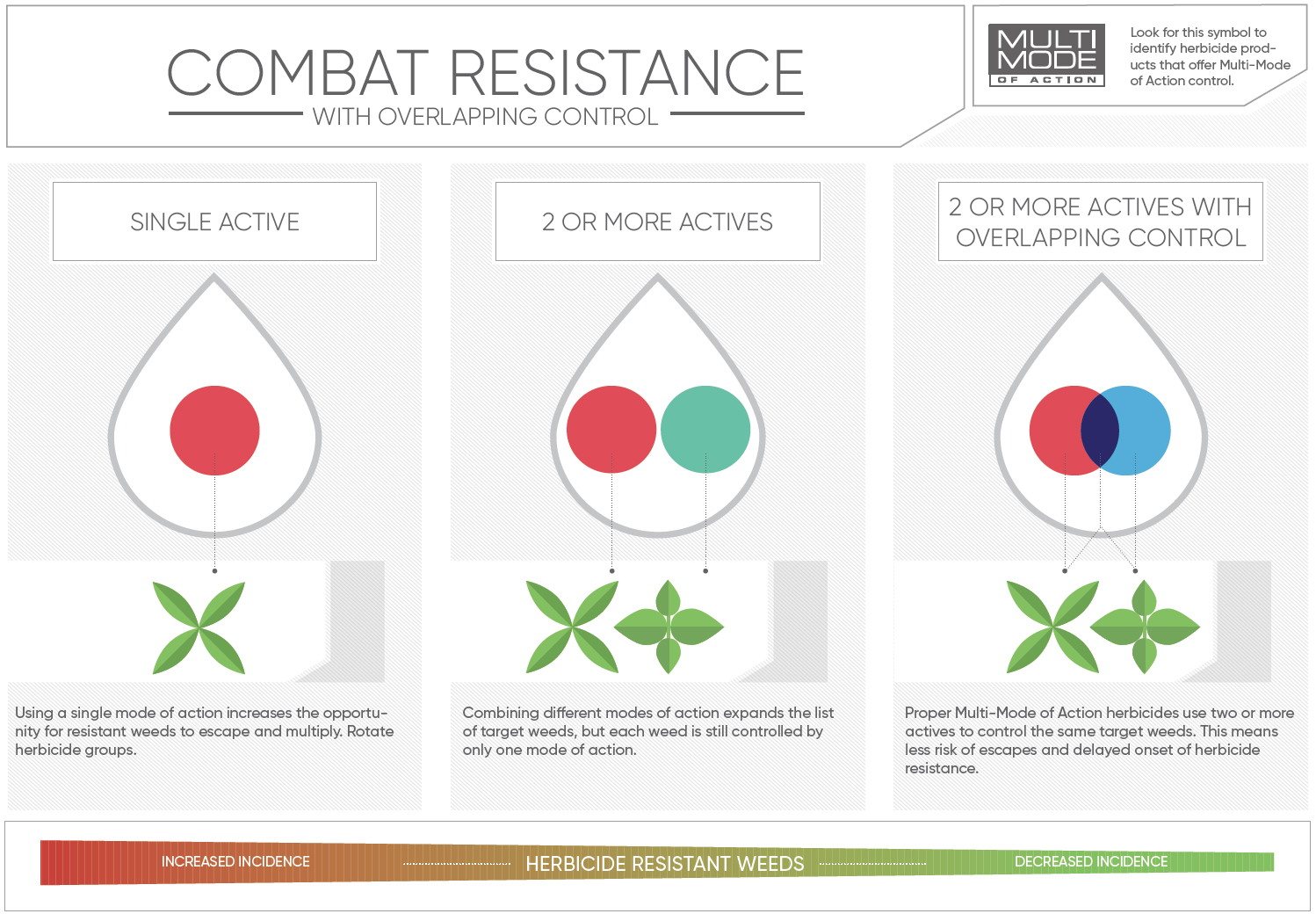'Talking Resistance' - Managing Herbicide Resistant Weeds

Herbicide resistance costs Canadian growers an estimated $1.1 to $1.5 billion annually due to increased herbicide use and decreased yield and quality.1
Herbicide resistance costs Canadian growers an estimated $1.1 to $1.5 billion annually due to increased herbicide use and decreased yield and quality.1
Farmers across the country continue to do their best to stop the spread of resistant weeds and preserve our leading crop protection tools, but often find it difficult to find accurate and up-to-date information on proper weed management practices in an online environment with lots of noise and misinformation.
To cut through the clutter, CropLife Canada developed ManageResistanceNow.ca, a trusted go-to resource where farmers can get unbiased, industry-leading research and advice on best management practices without the usual product mentions or promotional spin The development was overseen by the Resistance Management Committee representing all manufacturers, with the information reviewed and commented on by recognized industry experts.
Our Talking Resistance series will tackle herbicide, insecticide and fungicide resistance, but in part one we’ll stick to weeds, chatting with Kelly Bennett, Category Leader for herbicides at Corteva Agriscience™ and a member of CropLife’s Chemistry and Resistance Management Committees. Kelly believes if industry leaders and Canadian farmers continue to work together to manage weed resistance and protect crop yield and quality today, we can ensure sustainable crop production for the future.

Are Canadian farmers generally doing a good job managing herbicide resistance?
Yes - definitely. Herbicide resistance is a big, complex issue with no single answer or silver bullet. Because resistance is one of those problems you can never completely fix or get rid of entirely, it can be tempting to throw your hands up in the air and give up. But that’s not what Canadian farmers are all about. Instead, farmers have been doing their best to stay ahead of the problem and ensure the tools we do have stay effective for as long as possible.
In a Corteva-initiated study a few years ago, ‘resistance management’ was actually listed as a top-three management consideration behind only profitability and sustainability, and most farmers could name the most common herbicide management practices. When you consider that farmers are not just faced with agronomic decisions but the economic pressures of running a business, I think their efforts in managing herbicide resistance to this point should be commended. Of course, there’s always room for improvement.
Can you provide examples of the types of information that often steer farmers wrong?
Sure. Sometimes you'll see references in advertising or promotional articles where a product is described as having “multiple modes of action.” But this can often be misleading as one active could be for grass control and one could be for broadleaf control, or the individual actives don’t control the same weeds. So, at Corteva, we're taking steps to ensure the information we provide eliminates confusion and raises the level of knowledge. We can't do it on the product labels, but in our support materials we are moving to identify which weeds are actually getting multi-mode of action control, so farmers can be confident in their herbicide decisions. There are a lot of farmers out there doing the right thing with a good crop rotation and herbicide rotation, and we want that to continue.
1. Rotate crops
Crop rotation allows for rotation of herbicide groups, making it more challenging for weeds to develop resistance to repeated use of the same mode of action.
Rotate crops with different seeding and harvesting dates.
2. Mix and rotate herbicides
Rotate from one herbicide mix to another during a growing season and from one season to the next. It’s easy for weeds to become resistant to simple, predictable weed control. Mixing and rotating makes it unpredictable for weeds and creates diversity for your crop plan.
For a mixture to be truly multi-mode of action, both modes of action need to be effective on the same weed species. If you are targeting one species, ensure the herbicides you are using target that weed species.
3. Use recommended rates and timing
Using below-label rates of herbicides can contribute to development of resistance.
Survey your weed populations before spraying so that your weed management is field- and site- specific. Scout fields after herbicide application so that you know how successful you have been in controlling the targeted weeds. This can result in cost savings by reducing herbicide use.
For more best practices to manage herbicide resistance, visit: manageresistancenow.ca.
Why should farmers employ a good crop rotation?

When you grow a different crop, your timing is different and your practices are often different in how you manage that crop - so on an individual field when you move from one crop to another, it changes the environment for those pests. For example, maybe you’re seeding later and you have more opportunity to use a pre-seed herbicide at a different time when more weeds have emerged and you control more of them at a highly-susceptible stage.
Or maybe you’re growing something like winter wheat where you're changing your practices and seeding in the fall. Now you have a competitive crop that's coming up early in the spring and outcompeting some of your weed problems. So, you have less weed pressure and that adds to your weed management program. The competitiveness of the crop, the timing of emergence, the density of the canopy - all these things help with weed control.
Is it even possible for today’s farmers to follow recommended crop rotations?
The longer the crop rotation, the better, obviously. However, we recognize that Canadian farmers are running a business and often have to make tough choices that don’t always align with the ideal crop rotations. This makes it all the more important that growers mix and rotate herbicides between growing seasons. It is especially important with tighter canola rotations to switch herbicide-tolerance platforms so different herbicide groups are spread further apart. Of course, disease management also becomes a bigger consideration when canola is grown more than once in 4 years.
What advice would you give farmers who might be new to mixing and rotating herbicides?
What I would suggest is, start at a high level with your crop rotations and ask yourself, “are my crop rotations giving me the opportunity to maximize my management options?” Next, think of the management practices that might be different or the same between the crops you grow and try to switch it up whenever possible. You should also use a pre-seed application ahead of all your crops to control that first flush of weeds and give your crop the best start possible. Finally, make sure you're utilizing multi-mode of action with your pre-seed herbicide. A lot of farmers still use straight glyphosate as their pre-seed.
The best practice is to use glyphosate plus other herbicide products to preserve glyphosate for the long term.
That's a big switch you can very easily make today. Glyphosate-resistant weeds are not common right now and we can help keep it that way by amping up the use of multi-mode of action control, especially for broadleaf weeds. For grass weeds, there are some options available to include pre-emergent grass products.

Why should farmers use recommended rates of herbicides?
Farmers should always use recommended rates and go with the best timing possible, which for most products is that two-to-four leaf stage when the weeds haven’t grown too large and are easier to control. However, Mother Nature doesn't always cooperate in spray season, so you want to check your labels and choose products that have both a wide range of weed staging and a wide range for crop staging. This way, even if you get rain delayed by a week, you get the highest level of control and make no compromises.
What other advice would you give farmers regarding herbicide resistance management?
One of the keys is to try and increase your knowledge in the subject area, because there are lots of opinions out there and some may come with natural biases or other motives. So, always cross-reference your information by checking multiple sources, take advantage of resources like ManageResistanceNow.ca and find a local expert, whether it's an industry representative or a consultant or a retail agronomist, who can give you good advice. Other than that, just keep doing your best.

Corteva has a broad portfolio of industry-leading crop protection solutions to help you manage resistance. Find the product that is right for your farm.
1State of weed resistance in Western Canada and future outlook, Hugh J. Beckie June 2018